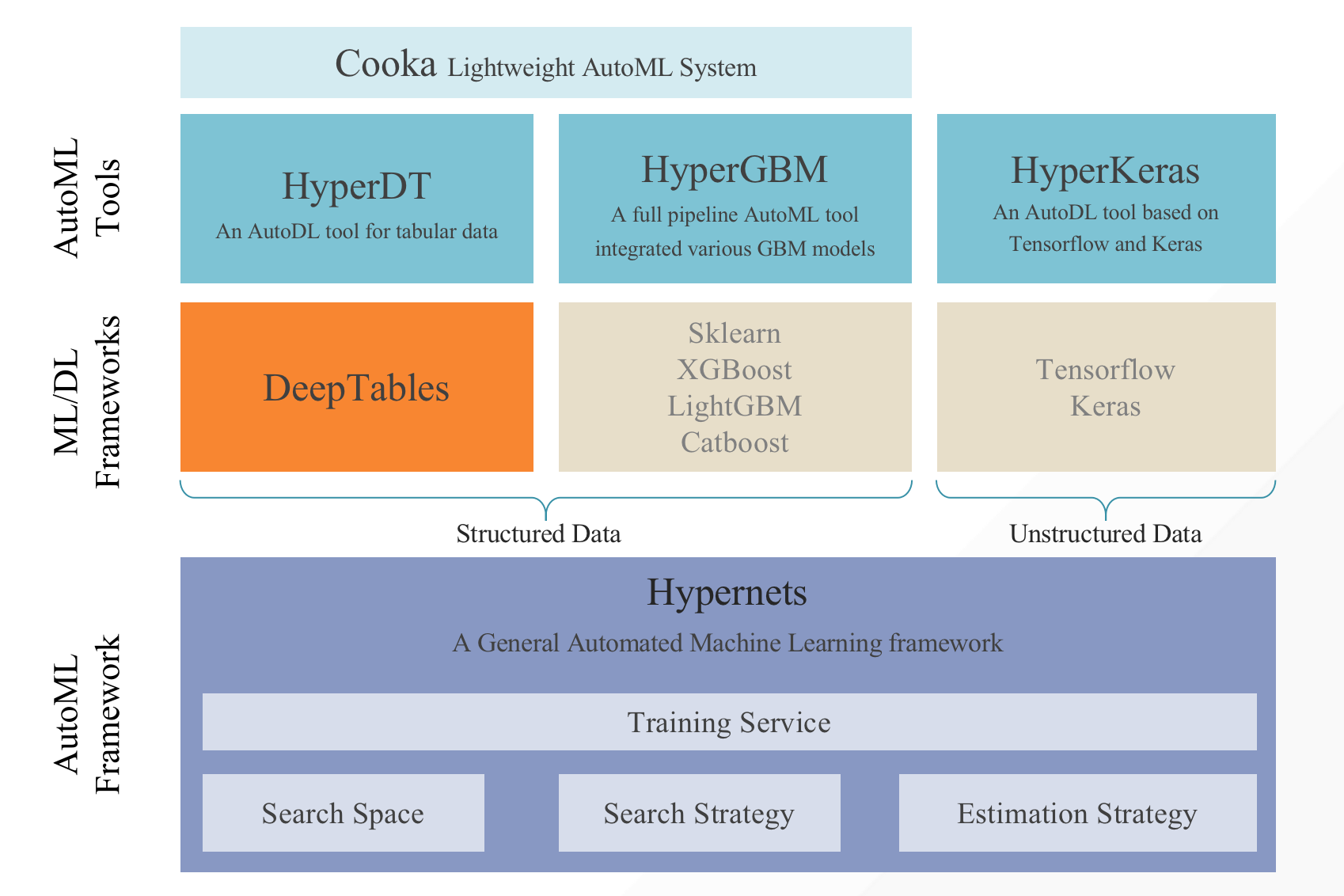HyperGBM
We Are Hiring!
Dear folks, we are opening several precious positions based in Beijing both for professionals and interns avid in AutoML/NAS, please send your resume/cv to yangjian@zetyun.com. (Application deadline: TBD.)
What is HyperGBM
HyperGBM is a library that supports full-pipeline AutoML, which completely covers the end-to-end stages of data cleaning, preprocessing, feature generation and selection, model selection and hyperparameter optimization.It is a real-AutoML tool for tabular data.
Overview
Unlike most AutoML approaches that focus on tackling the hyperparameter optimization problem of machine learning algorithms, HyperGBM can put the entire process from data cleaning to algorithm selection in one search space for optimization. End-to-end pipeline optimization is more like a sequential decision process, thereby HyperGBM uses reinforcement learning, Monte Carlo Tree Search, evolution algorithm combined with a meta-learner to efficiently solve such problems.
As the name implies, the ML algorithms used in HyperGBM are all GBM models, and more precisely the gradient boosting tree model, which currently includes XGBoost, LightGBM and Catboost.
The underlying search space representation and search algorithm in HyperGBM are powered by the Hypernets project a general AutoML framework.
Tutorial
Installation
Insall HyperGBM with pip command:
pip install hypergbmOptional, to run HyperGBM in JupyterLab notebooks, install HyperGBM and JupyterLab with command:
pip install hypergbm[notebook]Optional, to support dataset with simplified Chinese in feature generation, install jieba package before run HyperGBM, or install HyperGBM with command:
pip install hypergbm[zhcn]Optional, install all HyperGBM components and dependencies with one command:
pip install hypergbm[all]Examples
User can create experiment instance with make_experiment and run it quickly。train_data is the only required parameter, all others are optional. The target is also required if your target feature name isn't y。
Codes:
from hypergbm import make_experiment
from hypernets.tabular.datasets import dsutils
train_data = dsutils.load_blood()
experiment = make_experiment(train_data, target='Class')
estimator = experiment.run()
print(estimator)Outputs:
Pipeline(steps=[('data_clean',
DataCleanStep(...),
('estimator',
GreedyEnsemble(...)])
Hypergbm also provides command line tools to train models and predict data:
hypergm -h
usage: hypergbm [-h] [--log-level LOG_LEVEL] [-error] [-warn] [-info] [-debug]
[--verbose VERBOSE] [-v] [--enable-dask ENABLE_DASK] [-dask]
[--overload OVERLOAD]
{train,evaluate,predict} ...
For example, train model for dataset blood.csv:
hypergbm train --train-file=blood.csv --target=Class --model-file=model.pklHypernets related projects
- HyperGBM: A full pipeline AutoML tool integrated various GBM models.
- HyperDT/DeepTables: An AutoDL tool for tabular data.
- HyperKeras: An AutoDL tool for Neural Architecture Search and Hyperparameter Optimization on Tensorflow and Keras.
- Cooka: Lightweight interactive AutoML system.
- Hypernets: A general automated machine learning framework.
Documents
DataCanvas
HyperGBM is an open source project created by DataCanvas.


